The journey into the understanding of Metallic Hair Dyes, especially as it relates to the enduring heritage of textured hair, is a compelling narrative. It transcends simple chemistry, inviting reflection upon the intricate dance between elemental composition, ancestral practices, and the profound ways hair communicates identity. This exploration, viewed through Roothea’s lens, seeks to honor the deep wisdom embedded in cultural traditions while offering clear scientific insights, creating a tapestry of knowledge that speaks to the very soul of a strand.
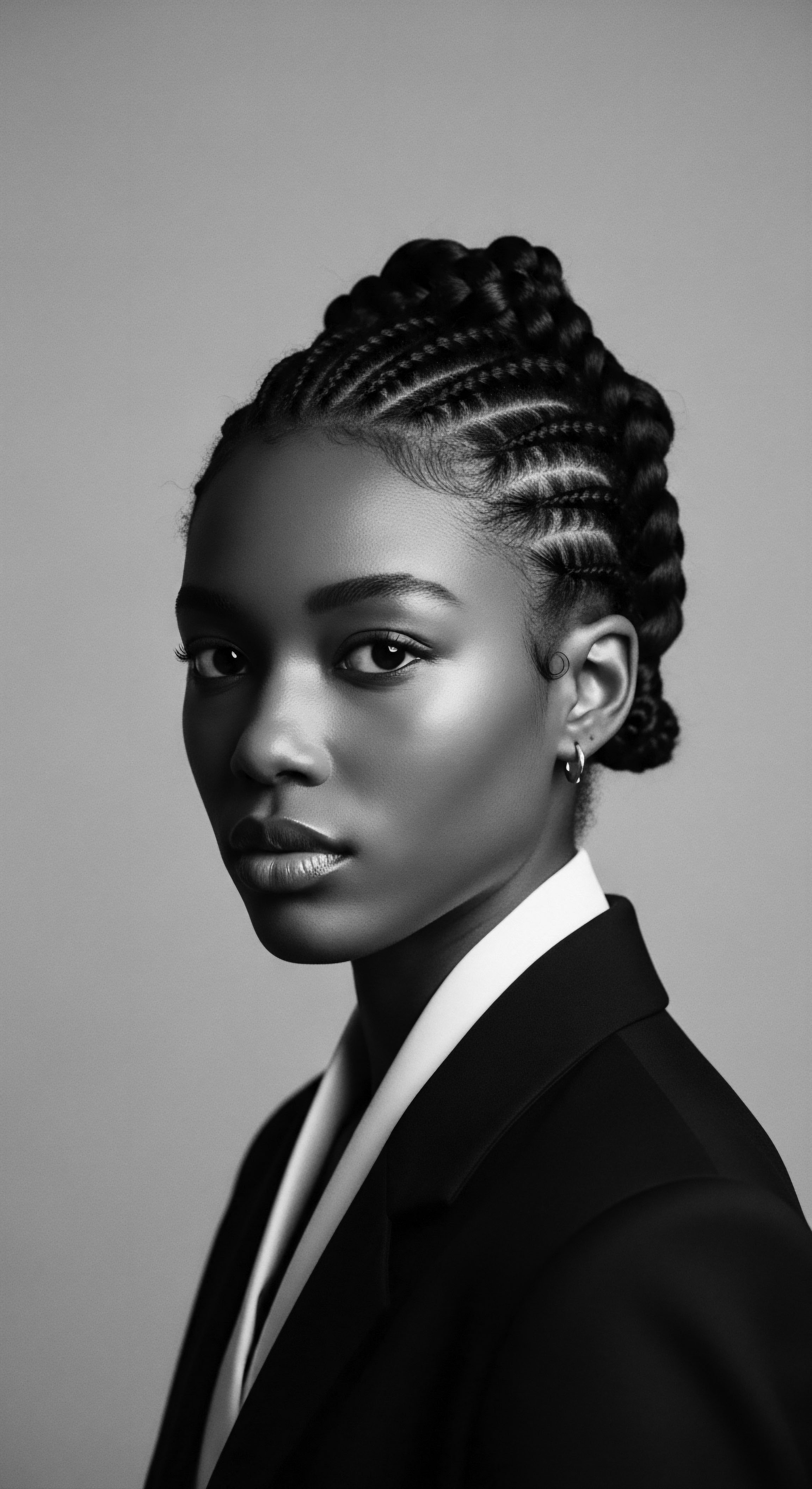
Fundamentals
Metallic hair dyes represent a distinct category of hair colorants. Their fundamental mechanism relies on the interaction between metal salts and the natural sulfur present within the hair’s keratin structure. This chemical interplay leads to the gradual deposition of metallic compounds, which then manifest as a change in the hair’s external hue.
Unlike some synthetic dyes that penetrate the hair shaft to alter its internal pigment, metallic dyes typically form a coating or subtle infiltration upon the hair’s outermost layers, often resulting in a progressive darkening over time. Common metal salts historically employed in these formulations include compounds of lead, silver, and bismuth.
The core chemical concept behind these dyes involves a reaction between the metal ions in the dye solution and the sulfur atoms, specifically those found in the amino acid cysteine, which forms disulfide bonds within the keratin protein of hair. When these metal ions encounter sulfur, they form insoluble metallic sulfides or oxides. These newly created compounds adhere to the hair, producing a color change. The depth of color deepens with repeated applications as more of these metallic precipitates accumulate on and within the hair fiber.
Metallic hair dyes alter hair color by depositing metal-sulfur compounds onto the hair’s surface, a process distinct from traditional pigment penetration.
Historically, the earliest documented uses of colorants for hair stretch back millennia, far preceding the advent of modern synthetic chemistry. Ancient civilizations, driven by aesthetic, spiritual, or social imperatives, sought ways to adorn and transform their hair. While many ancient practices favored plant-derived colorants like henna or indigo, the utilization of minerals and earth pigments also played a role in the quest for vibrant hair.
Ancient Egyptians, for instance, used henna for reddish hues, and evidence suggests early applications of mineral-based colorants for various shades. The Romans, too, experimented with lead salts for progressive darkening, hinting at an early, less refined understanding of metallic interactions with hair.
Understanding the meaning of metallic hair dyes also necessitates a look at their sensory qualities. The way these dyes interact with hair can sometimes leave a unique tactile feel, distinct from other coloring methods. The progressive nature of their coloring process means that the final shade does not appear immediately but builds subtly, sometimes over several applications. This characteristic has often defined the user experience with these products, distinguishing them from more immediate, permanent color transformations.

Early Expressions of Hair Adornment
From the ancestral heartlands, the act of adorning hair carried deep significance, transcending mere aesthetics. Hair served as a visual language, a repository of identity, status, and spiritual connection. Early communities across Africa, long before the arrival of manufactured dyes, employed natural materials for hair care and coloring.
These materials, often derived from the very earth or from indigenous plants, spoke to a profound connection with the land. For instance, ochre , a naturally occurring clay pigment rich in iron oxides, was used across various African cultures not only for body adornment but also to impart reddish-brown tones to hair, symbolizing vitality or status.
The application of these mineral pigments often involved elaborate rituals, reflecting a holistic approach to beauty and well-being. These practices were not about superficial change; they were ceremonial acts of self-expression, communal bonding, and a celebration of heritage. The choice of color or pigment often conveyed messages about one’s age, marital status, or lineage within a community. This collective understanding, passed down through generations, established hair as a living archive of cultural knowledge.
- Henna ❉ Derived from the plant Lawsonia inermis, it imparts reddish-brown tones and has been used for millennia across North Africa, the Middle East, and South Asia for hair and body art, often signifying celebration or protection.
- Indigo ❉ Sourced from the Indigofera tinctoria plant, it yields deep blue hues, historically mixed with henna to achieve richer brown or black shades.
- Ochre ❉ A natural earth pigment containing hydrated iron oxides, employed in various shades from yellow to red-brown, used by many indigenous communities globally for its abundant presence and symbolic value.

Intermediate
Metallic hair dyes, in their more refined chemical forms, began to gain prominence in the Western world during the 19th century, marking a departure from the purely plant-based or crude mineral applications of antiquity. These commercial preparations often contained lead acetate, silver nitrate, or bismuth citrate. The chemical explanation for their action lies in the reaction of these metal salts with the sulfur in the hair’s keratin. Hair protein is rich in cysteine, an amino acid containing sulfur.
When the metal ions come into contact with these sulfur groups, they precipitate as insoluble metal sulfides, which are dark in color. For instance, lead acetate reacts with sulfur to form lead sulfide, a black compound. This interaction occurs primarily on the hair’s outer cuticle and can gradually penetrate the cortex with repeated use.
The progressive nature of these dyes, where color builds subtly over several applications, was once viewed as an advantage, offering a more “natural-looking” transition compared to the immediate, often stark, results of early synthetic dyes. However, this gradual darkening also presented challenges, as consistent application was necessary to maintain the desired shade, and the inability to precisely control the color progression could lead to unintended greenish or purplish tints.
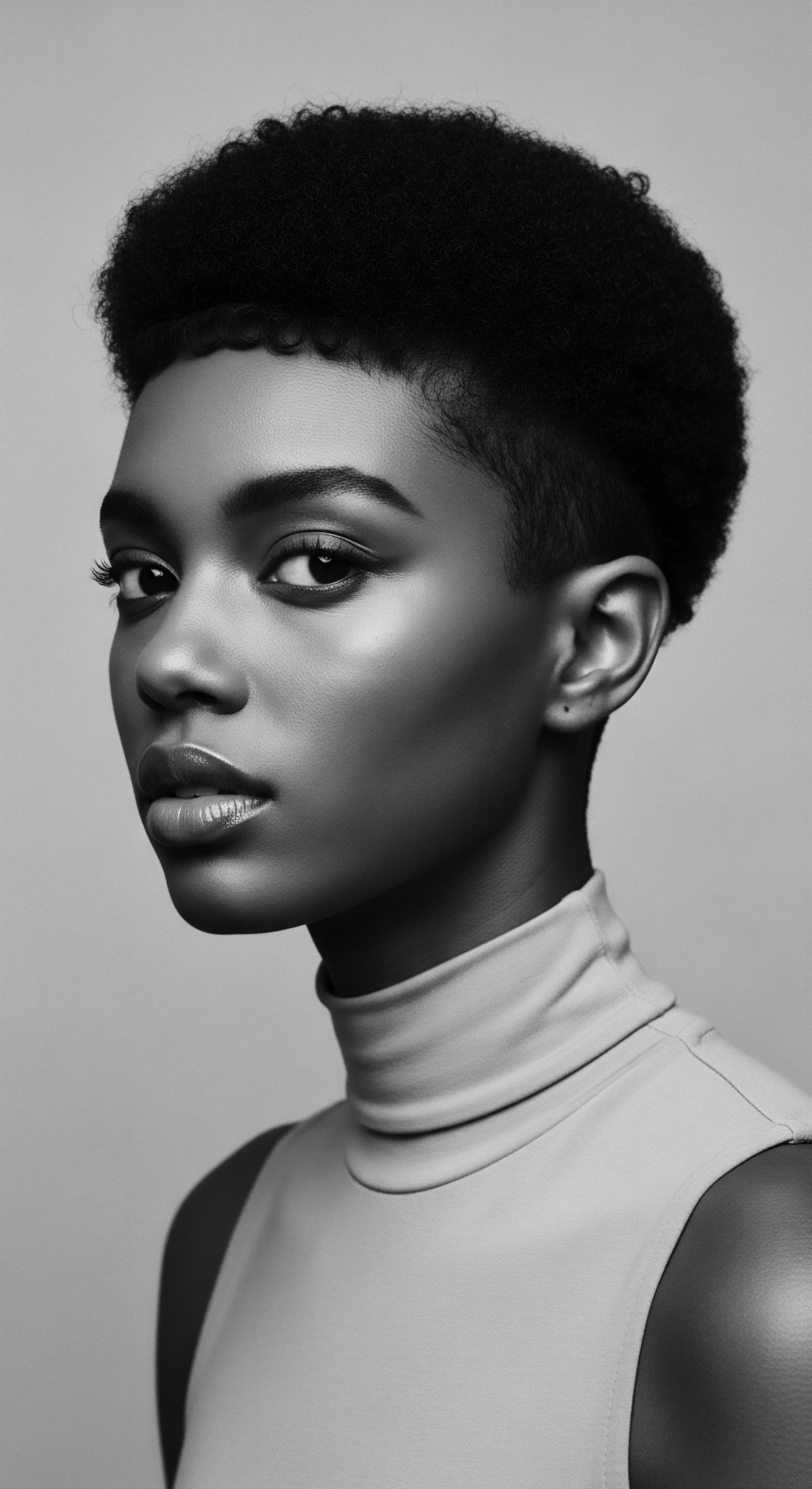
A Shift in the Landscape of Hair Color
The introduction of manufactured metallic hair dyes, particularly in the late 19th and early 20th centuries, created a complex intersection with the existing hair care traditions within Black and mixed-race communities. For generations, hair practices within these communities were intimately linked to cultural identity and ancestral knowledge, emphasizing nourishment, adornment, and the celebration of diverse textures. The arrival of new chemical products offered a different kind of transformation, often promising a departure from textures and shades that society, through Eurocentric beauty standards, had deemed “unprofessional” or “undesirable.”
The advent of metallic hair dyes introduced a new dimension to hair alteration, setting a gradual, surface-level change in contrast to the deep, immediate pigment shifts of later synthetic products.
The meaning of hair color began to evolve within this context. While ancestral practices celebrated a range of natural hues and textures, the societal pressures to conform often led individuals within the Black diaspora to seek products that could straighten or darken hair to align with dominant beauty ideals. Although metallic dyes were not primarily used for straightening, their ability to gradually darken hair might have appealed to those seeking a universally accepted shade, especially when graying. This represented a subtle, yet significant, departure from hair care rooted purely in ancestral wellness.
Consider the broader impact of chemical hair products on Black women. A study published in the International Journal of Cancer found that permanent hair dye use was associated with a 45% higher risk of breast cancer among Black women compared to a 7% higher risk among white women. While this particular study focuses on permanent dyes (often synthetic), it underscores the health disparities that can arise from widespread adoption of commercial hair products within communities facing specific societal pressures. The legacy of metallic dyes, though perhaps less studied in this specific health context than other chemical straighteners or synthetic dyes, forms a part of this larger narrative of chemical intervention in textured hair, highlighting a historical period where the pursuit of beauty, sometimes driven by external pressures, led to the widespread use of substances whose long-term effects were not fully understood.
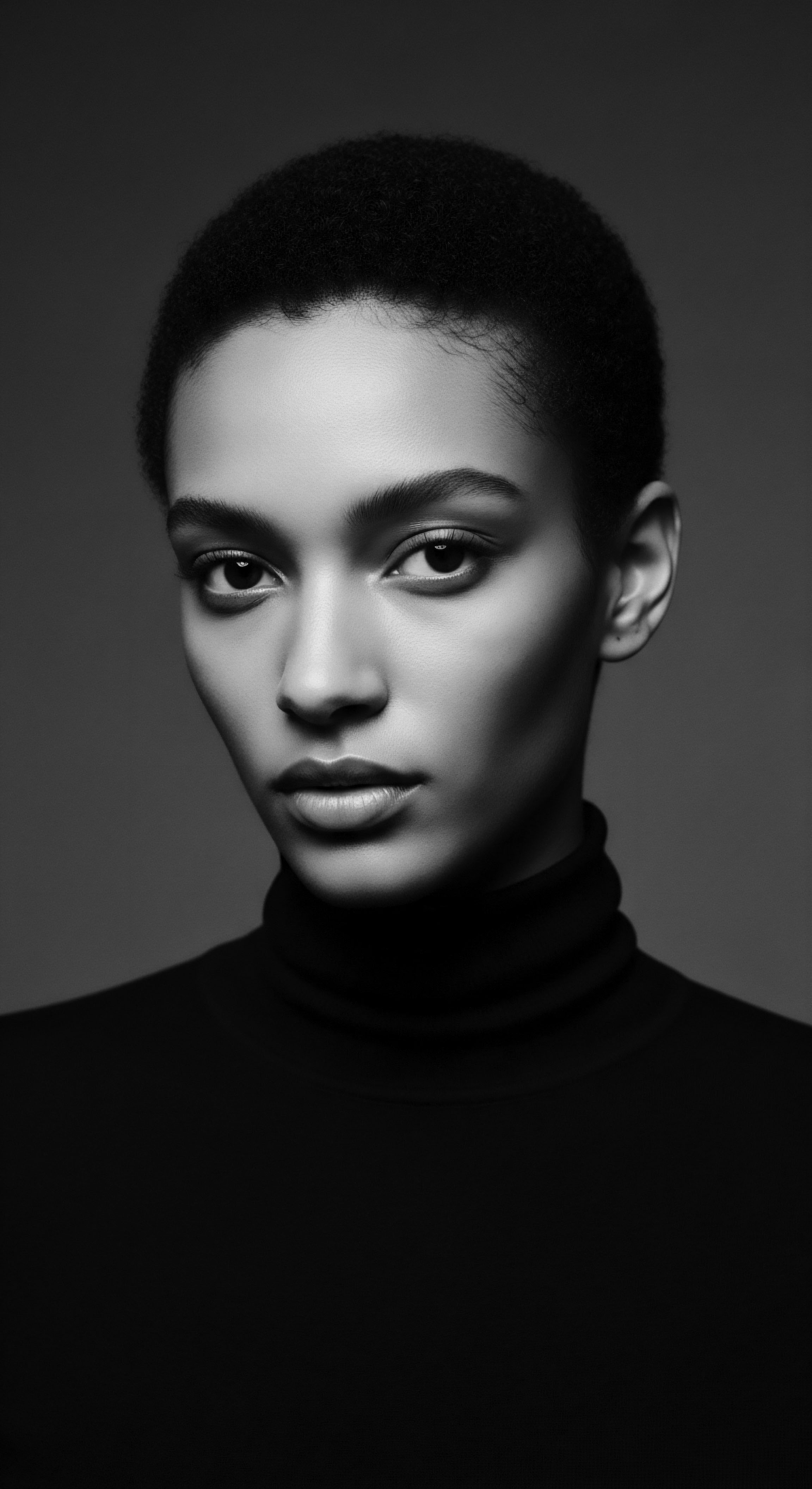
Understanding the Chemistry of Progressive Darkening
The mechanism by which metallic hair dyes gradually darken hair is a fascinating lesson in chemical reactivity. Hair’s outermost layer, the cuticle, acts as a protective shield, comprising overlapping scales. Below this lies the cortex, where melanin pigments reside. Metallic dyes primarily act upon the sulfur within the keratin protein, which is found throughout the hair shaft.
When a solution containing a metallic salt, such as lead acetate, is applied, the metal ions interact with the cysteine residues in the hair. Cysteine contains a sulfhydryl (-SH) group, which readily reacts with metal ions. This reaction creates insoluble metallic sulfides, for example, lead sulfide (PbS), which appears as a dark precipitate.
Because this process occurs progressively and often without the aid of an oxidizing agent (like hydrogen peroxide used in many permanent dyes), the color builds slowly, layer upon layer, as the metallic compounds adhere to the hair shaft. This gradual accumulation is what provides the subtle, “restored” appearance often marketed with these products.
| Historical Period / Approach Ancient Ancestral Practices (Pre-19th Century) |
| Primary Characteristics / Methods Reliance on natural plant extracts (henna, indigo) and mineral pigments (ochre, clays). Often incorporated into communal rituals. |
| Connection to Textured Hair Heritage / Implications Deeply interwoven with cultural identity, social status, spiritual beliefs. Colors often derived from indigenous flora and earth, reflecting local landscapes and traditions. Hair care was holistic, emphasizing nourishment and communal bonding. |
| Historical Period / Approach Early Metallic Dyes (19th – Mid 20th Century) |
| Primary Characteristics / Methods Commercial formulations containing lead, silver, bismuth salts. Progressive darkening through reaction with hair's sulfur. |
| Connection to Textured Hair Heritage / Implications Introduced new chemical interactions. Often marketed for subtle gray coverage. For textured hair communities, this marked a period where new products, sometimes driven by a desire to align with Eurocentric beauty standards (e.g. darker, uniform shades), entered traditional care routines. The emphasis shifted from natural nourishment to chemical alteration. |
| Historical Period / Approach Modern Synthetic Dyes (Mid 20th Century – Present) |
| Primary Characteristics / Methods Oxidative dyes with PPD, ammonia, peroxide. Wide spectrum of colors, permanent changes. |
| Connection to Textured Hair Heritage / Implications Revolutionized color possibilities, but also brought increased chemical exposure concerns. For Black and mixed-race hair, these dyes, alongside chemical relaxers, became tools for stylistic versatility yet often contributed to scalp irritation or hair damage. The market intensified its focus on specific beauty ideals. |
| Historical Period / Approach The journey of hair coloring reflects a complex interplay of cultural autonomy, adaptation, and the enduring quest for self-expression across the textured hair continuum. |

Academic
The editorial definition of Metallic Hair Dyes transcends a mere cataloging of chemical compounds or historical usage. At an academic level, it represents a profound meditation on the interplay of human chemistry, cultural aspirations, and the indelible marks of history upon the very fibers of our being. Metallic hair dyes, fundamentally, are preparations containing metallic salts—most commonly lead acetate, silver nitrate, or bismuth citrate—which effect a color change by reacting with the sulfhydryl groups of cysteine residues within the keratin protein of the hair shaft. This reaction produces insoluble metal sulfides, such as lead sulfide, which deposit onto and subtly permeate the hair’s cuticle and superficial cortex, yielding a progressive darkening.
This chemical reaction is distinct from oxidative dyes, which use hydrogen peroxide to develop color precursors within the hair, and also from direct dyes, which merely stain the surface. The meaning of these dyes, therefore, extends beyond their immediate chemical function to encompass their historical trajectory, their societal implications, and their specific resonance within textured hair communities.
Understanding the significance of metallic hair dyes requires an examination of their genesis and evolution within broader cosmetic history. While ancient societies employed mineral pigments for adornment, the industrial production of metallic dyes for hair gained momentum in the 19th century. Early forms, often crude, presented challenges in application and consistency, sometimes yielding undesirable greenish or purplish tints.
The allure of these products lay in their capacity for gradual gray coverage, a subtle change appealing to those seeking to mask signs of aging without the starkness of early synthetic alternatives. This particular characteristic, a slow, gentle shift, made them appear more “natural” in their effect compared to other options available at the time.

The Complex Intersections with Textured Hair Heritage
The journey of metallic hair dyes cannot be fully apprehended without acknowledging their complex and often fraught relationship with textured hair heritage, particularly within Black and mixed-race communities. Historically, these communities possessed rich, multi-dimensional hair traditions rooted in ancestral wisdom, where hair care was a holistic practice connected to well-being, community, and identity. Hair was a sacred adornment, reflecting lineage, status, and spiritual connection. The imposition of Eurocentric beauty standards, however, created immense pressure for Black women to alter their natural hair textures and colors to align with dominant ideals of “straight” and “manageable” hair.
While chemical relaxers became a primary tool for texture alteration, hair dyes, including metallic formulations, played a role in achieving a desired aesthetic that often favored uniform, dark shades. The subtle darkening offered by metallic dyes, perhaps less overtly aggressive than lightening or drastic color changes, might have presented itself as a less conspicuous means of conforming to prevailing beauty norms. This period highlights a crucial dynamic ❉ the shift from hair practices as expressions of inherent cultural value to practices often influenced by external validation and assimilation.
Metallic hair dyes, while offering subtle color changes, represent a complex chapter in textured hair heritage, standing at the crossroads of scientific innovation and societal pressures for conformity.
Consider a specific historical example ❉ The marketing of hair products to African American consumers in the early to mid-20th century. Advertising during this period, even within publications targeting Black audiences, often promoted an aesthetic of straightened, sleek, and uniformly dark hair. While not exclusively featuring metallic dyes, these advertisements contributed to a beauty paradigm that indirectly influenced product choices. Products that promised a “restored” or “natural-looking” dark hue, such as some metallic dyes like Grecian Formula, though often marketed to men for gray coverage, found their way into broader usage, as the societal preference for darker, seemingly “tamed” hair extended across gender and racial lines due to prevailing beauty dictates.
The enduring legacy of such products underscores the profound impact of societal beauty standards on personal choices and communal practices. The question of safety, too, becomes paramount. Early metallic dyes, especially those containing lead acetate, posed significant health risks due to lead absorption.
The FDA, for instance, in 1980, controversially permitted lead acetate in hair dyes, only to face petitions for its ban in 2017, with a reinstated ban coming into effect in 2022. This regulatory history reveals a tension between product availability and consumer well-being, a tension that has disproportionately affected communities historically targeted by aggressive marketing of chemical hair solutions.
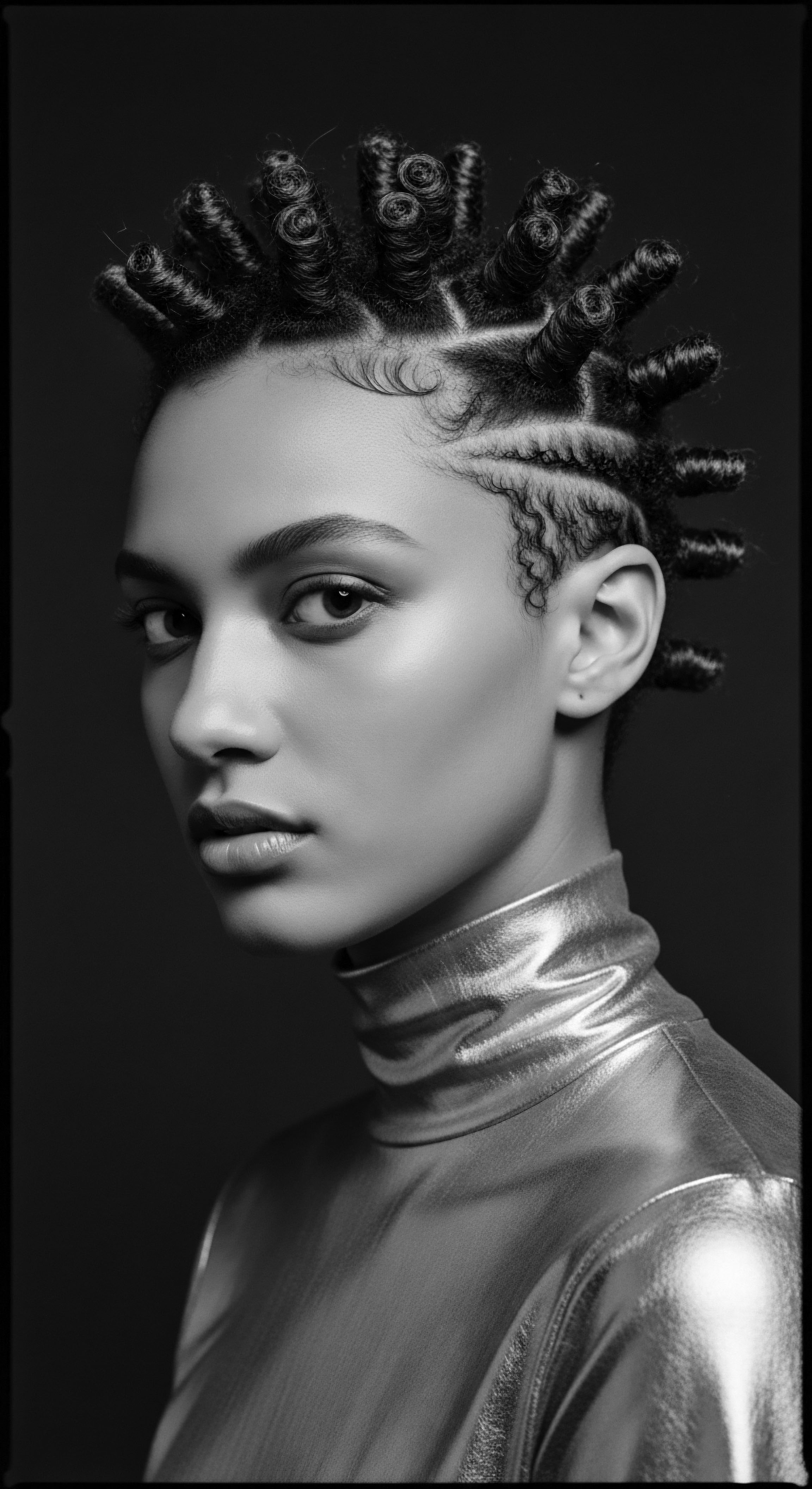
Deep Dive into the Science and Societal Impact
The chemical interaction of metallic dyes with hair, though seemingly straightforward, carries deeper implications for textured hair. Afro-textured hair, characterized by its unique curl patterns and structural variations, can respond differently to chemical treatments compared to straight hair. The disulfide bonds in keratin, which are the targets of metallic salts, are plentiful across all hair types, yet the way these bonds are arranged and how external substances penetrate the hair shaft can vary. The progressive accumulation of metallic compounds can affect the hair’s porosity and elasticity over time, potentially leading to increased dryness or brittleness if not properly managed within a comprehensive hair care regimen.
From a sociological perspective, the decision to use hair dyes, including metallic ones, can be a complex negotiation of personal expression, cultural affirmation, and societal conformity. For individuals within the Black diaspora, hair is not merely an anatomical feature; it is a potent symbol of identity, resilience, and resistance. The act of coloring hair, whether with traditional plant-based dyes or modern chemical compounds, often reflects a dialogue with historical narratives and contemporary beauty ideals.
The case of lead acetate in hair dyes provides a compelling example of the complex relationship between cosmetic chemistry, public health, and racial equity. Dr. Howard Mielke of Tulane University conducted studies revealing alarmingly high lead levels—between 2,300 and 6,000 parts per million (ppm)—in samples of hair dyes listing lead acetate as an ingredient. To frame this, the federal government has banned lead levels greater than 90 ppm in paint for homes and children’s products.
This stark disparity highlights a significant environmental justice concern. Historically, communities of color have been disproportionately exposed to environmental toxins due to systemic inequities. The continued presence of lead in hair dyes, despite clear evidence of its neurotoxicity, particularly to children who might come into contact with residues, raises questions about regulatory oversight and consumer protection within marginalized populations.
This situation illustrates a broader pattern where products, despite their known risks, persist in markets, sometimes with a particular impact on communities seeking to align with beauty standards that may not naturally suit their hair type. The ongoing advocacy by groups like Breast Cancer Prevention Partners and Earthjustice to ban lead acetate from hair dyes, culminating in the FDA’s eventual enforcement, reflects a critical movement to prioritize health over cosmetic convenience, especially for vulnerable populations.
The academic understanding of metallic hair dyes thus demands an interdisciplinary approach, drawing from chemistry, toxicology, cultural studies, and public health. It is a story of human ingenuity in altering appearance, but also a cautionary tale about the social forces that shape our choices and the enduring fight for health equity within beauty practices. The ongoing dialogue around hair discrimination and the natural hair movement further underscore the profound political and social implications of hair choices, including the historical engagement with products like metallic dyes.
This deeper investigation unveils that the true meaning of metallic hair dyes is multifaceted. It is a chemical process, certainly, but also a reflection of cultural assimilation, a marker of health disparities, and a testament to the persistent quest for self-definition through appearance, always tethered to the living, breathing heritage of hair.
- Chemical Reactivity ❉ Metal salts, like lead acetate or silver nitrate, interact with the sulfur-containing amino acid Cysteine in hair keratin. This reaction generates insoluble metal sulfides or oxides that deposit on the hair.
- Progressive Coloration ❉ The color develops gradually with repeated applications as more metallic compounds accumulate, offering a subtle darkening effect over time.
- Health Implications ❉ Early metallic dyes, particularly those containing Lead Acetate, posed significant health risks due to systemic lead absorption, leading to calls for bans and reformulations globally.
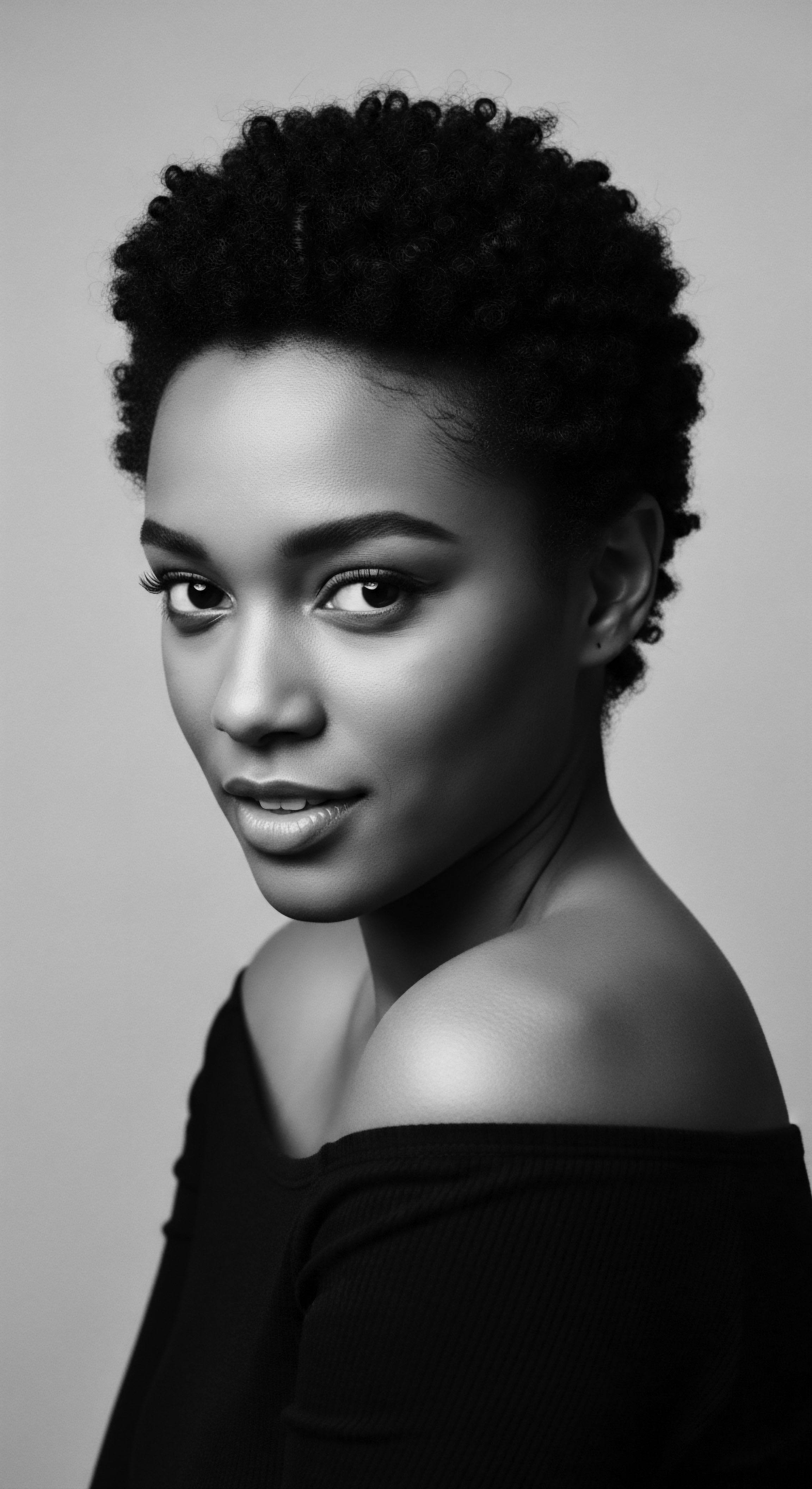
Reflection on the Heritage of Metallic Hair Dyes
The journey through the definition and historical landscape of metallic hair dyes invites a moment of soulful reflection upon their place within the expansive narrative of textured hair. Our exploration has traversed ancient practices, where earth’s elements offered their gentle hues, to the advent of chemical compounds, bringing both new possibilities and unforeseen challenges. We recognize that hair, for Black and mixed-race communities, has always been more than mere strands upon the head; it is a profound repository of memory, a canvas for self-expression, and a testament to enduring spirit.
The tale of metallic hair dyes, though often viewed through the lens of modern chemistry, echoes with ancestral wisdom. It reminds us of a time when communities instinctively understood the power of natural pigments, those derived from plant and mineral, to adorn and protect. The initial curiosity, perhaps, to harness the subtle reactive power of metals was a continuation of humanity’s long-standing desire to partner with the earth in matters of beauty.
Yet, as commercial interests grew, and as Eurocentric ideals cast their long shadow over diverse hair traditions, the narrative shifted. Products were introduced that sometimes promised conformity over genuine care, a subtle but significant departure from the tender threads of ancestral practice.
This historical passage, particularly the impact of products like lead-based dyes on Black communities, serves as a poignant reminder. It underscores the critical need for discernment and a return to the roots of holistic wellness that honor the unique biology and cultural heritage of textured hair. The choices made about our hair, whether to alter its color or texture, hold profound meaning. They can be acts of liberation, of embracing personal style, or they can be responses to external pressures that erode self-acceptance.
The resilience inherent in textured hair heritage, the ingenuity of those who maintained their traditions against formidable odds, and the ongoing movement towards natural hair acceptance all speak to an unbroken lineage of care. As we consider the elements that form metallic dyes, we are prompted to consider the elements that form us ❉ earth, spirit, and an enduring connection to our past. The unbound helix of our hair continues to tell stories, ancient and new, always reminding us to seek that which truly nourishes, celebrates, and affirms our inherent beauty, rooted deeply in ancestral wisdom and self-love.
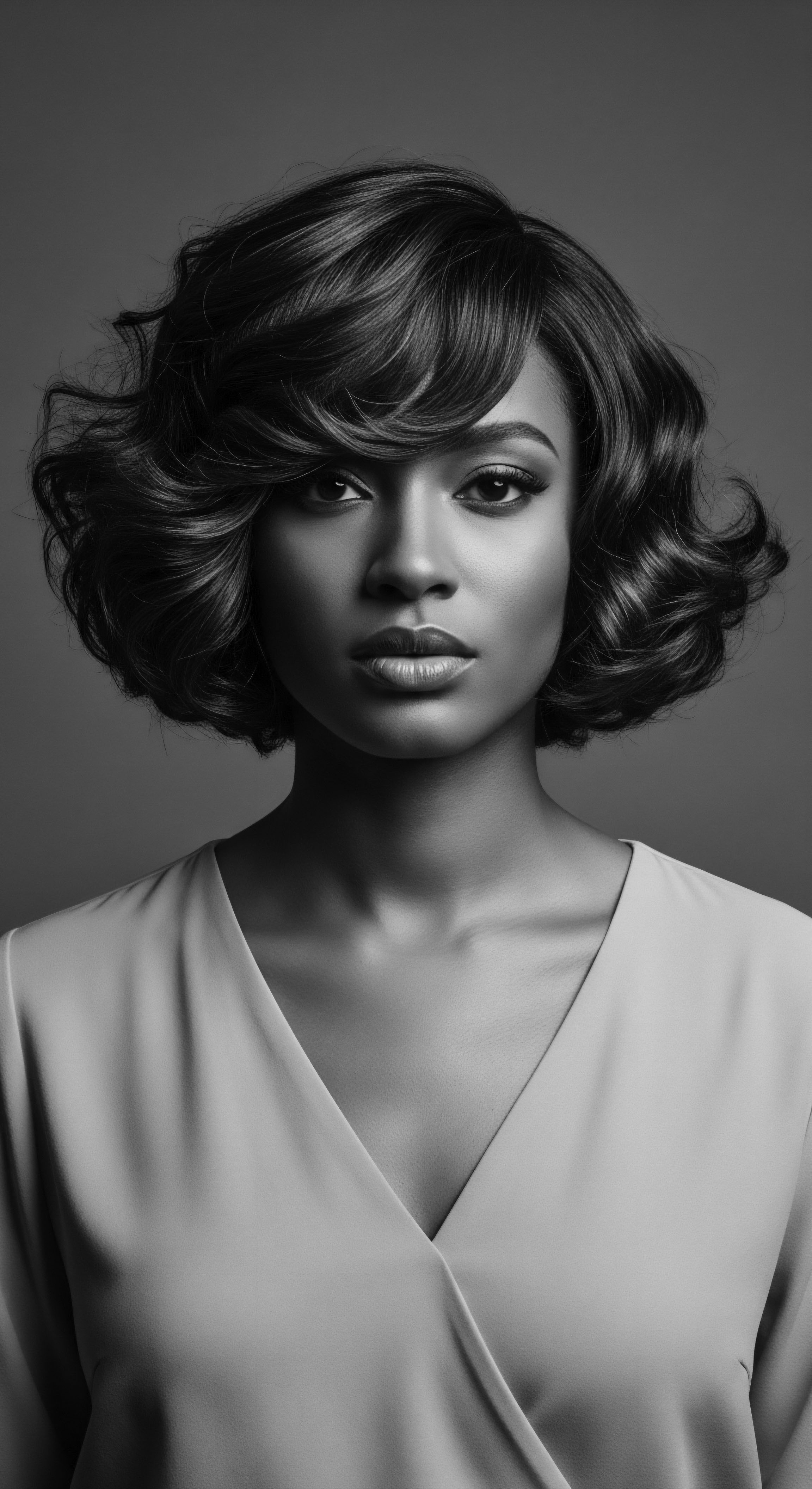
References
- Byrd, A. D. & Tharps, L. D. (2014). Hair Story ❉ Untangling the Roots of Black Hair in America. St. Martin’s Press.
- Banks, I. (2000). Hair Matters ❉ Beauty, Power, and Black Women’s Consciousness. New York University Press.
- Brown, K. (2012). Hair Stories ❉ Uneasy Liaisons in the Culture of Black Hair. Rutgers University Press.
- Chang, C. J. et al. (2025). Hair Straightener Use in Relation to Prevalent and Incident Fibroids in the Sister Study with a Focus on Black Women. Environmental Health Perspectives, 133(1), 017006. (Source:)
- Corbett, J. F. (1999). An historical review of the use of dye precursors in the formulation of commercial oxidation hair dyes. Dyes and Pigments, 42(3), 199-207. (Source:)
- Lashley, M. (2019). The importance of hair in the identity of Black people. Érudit, 34(3), 365-380. (Source:)
- Nascimento, M. P. et al. (2017). Types of Hair Dye and Their Mechanisms of Action. Molecules, 22(8), 1279. (Source:)
- Redgrove, S. L. & Foan, G. A. (1929). Paint, Powder, and Patches ❉ A Handbook of the Manufacture of Cosmetics, Perfumes, and Allied Preparations. William Heinemann. (Source:)
- Schlosser, M. (2003). Toxicology of Hair Dyes. Food and Chemical Toxicology, 42(4), 517-543. (Source:)
- Wallace, L. T. et al. (2022). “I Remember My First Relaxer” ❉ Black Women Voicing Psychologically Engrained Practices of Chemical Hair Straightening. Journal of Black Psychology. (Source:)
